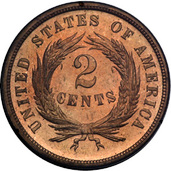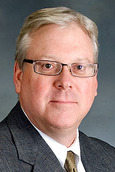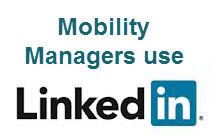May 2013 NY MM E-news
|
|
My 2 Cents
 1870
Welcome to the May 2013 NY MM E-news, a crowd-sourced newsletter by mobility managers in New York State. It's been 8 months since the last E-news. Then again, this is not my day job.
Special thanks to Amber Simmons, Mobility Manager, ARC of Schuyler and Ray Weaver, Way2Go Program Director, Cornell Cooperative Extension of Tompkins County for contributing to this issue. To mobility managers heading out to the CTAA EXPO in New Mexico next week, you be hearing from me. I have one shameless promotion - on June 26-27, Tompkins County is hosting the National Transit Institute's Implementing Rural Transit Technology workshop in Ithaca, NY, presenting "a structured approach for planning,implementing, and evaluating rural transit technology projects to help ensure that agency needs and expectations are met." Now, who doesn't want that? The class is free, and expenses are RTAP-eligible through NYSDOT. Feel free to contact me with questions about mobility management. We started a Help Desk feature to crowd-source solutions using our mobility manager Google Group. Ulster County Public Transit raised a question about using taxis to help provide ADA Paratransit service. Be well and prosper. I hope to see you in Ithaca in June. Dwight Mengel Editor & Publisher Amber Simmons - I received a phone call from Senator O’Mara’s office and have been asked to be a part of a round table discussion in Albany on May 6th to mitigate some of the impact the NEMT transfer to Regional Transportation Managers. Senator O’Mara hosts Non-Emergency Medical Transportation round table discussion on May 6, 2013
 Sen. Thomas F. O'Mara
By Amber Simmons, Mobility Manager, The Arc of Schuyler On Monday May 6th a group of county officials, transportation operators and state legislators, invited by Senator Thomas O’Mara (58th District), met in Albany to discuss the NYS Department of Health's roll-out of regional brokerages of Non-Emergency Medical Transportation (NEMT) under Medicaid. The objective is to reduce the overall cost of transportation. Many of us have been wondering exactly how this cost saving would be realized, since Upstate NY is already coordinating transportation. The Department of Health was invited to attend, but declined the Senator’s offer. Therefore, we were all still left wondering. The experience was fascinating. Albany people watching is world-class. The mass of people resemble army ants marching with expressions of determination or insomnia, all destined for some specific purpose. We were guided through the maze to our meeting hall where representatives from the following counties and transportation providers were present: Chemung, Franklin, Ontario, Otsego, Schuyler, First Transit, Bernie Bus and MV Transportation. Senator Valesky was also present for some of the meeting. Brief appearances or representatives from the offices of Senators O’Brien, Griffo, Nozzolio and Little were there. The Assembly members (or staff) of Lifton, Duprey and Giglio were also present. Senator O’Mara began the discussion with a question. Has anyone from the region been given more information regarding the launch of the program? They (Department of Health) previously stated the roll-out of the program will be late spring and summer, but no announcement of the winning bidder has been made and a final contract has not been issued. Transit providers across the State and coordinators of transportation are in a quandary about contracts, service continuation, payments, etc. “Soon and their intention is not to destroy what’s in place” seems to be the only given generic answer. Another question posed by the officials was why are they duplicating what’s already being done? It appears this an example of a one-size fits all approach to Medicaid transportation. It worked Downstate and therefore it must work Upstate. In Upstate NY coordination has been happening through necessity. Rural transportation is a patchwork of coordination agreements that have been stitched together to provide as many rides as possible with the few resources available. Without a detailed, local knowledge base, this new concept appears to have some very large hurdles to overcome. In addition, the impact to public transportation could be devastating and the discussion turned to how some Downstate transit companies viewed the change. Some systems experienced a heavy drop in Medicaid ridership as the Call Center found it easier to place rides in cabs. Another region had been saving money by successfully persuading clients to move appointments to fit bus schedules. Once the call center was in place, they dispatched individual cab rides. Riders soon discovered that they only needed schedule appointments outside regular transit hours to receive the more costly, personalized service. Getting riders back to transit was virtually impossible. Some of the benchmarks set for the Transportation Manger are hold time, call length, and others relating to maximizing the number of handled calls. Being efficient in handling call volume does not prioritize discovering the most appropriate mode of transportation. NYSDOT helped break down many of the funding silos that previously kept agencies from coordinating rides. They helped create and model cost share agreements which made much of today’s coordination possible. Jim Gorman of First Transit urged our elected officials to bring NYSDOT back into the conversation and the group echoed in agreement. Since they assisted in creating some of these rural transportation networks, they would be a valuable resource to assist Department of Health and the Transportation Manager (winning bidder of the call center) make the program successful and mitigate possible damage. As Mobility Managers, we should keep the communication lines open. We need to ensure that our local stakeholders are educated prior to the roll out. We should also keep our Senators and Assembly people informed and let them know how this will impact the coordination process and agreements that exist within our communities. We need to know the cost-saving measures are already in place and how these interdependencies operate in our region. This change will happen, but moving forward we need to ensure the best possible outcome for our communities and keeping the people who will have influence in the process is important. Contacts: Senator Omara: [email protected] Pierson Ellis, Chief of Staff for Senator Omara: [email protected] Access to your state representatives can be found at: http://assembly.state.ny.us/mem/?sh=email & http://www.nysenate.gov/?sh=email [email protected] [email protected] [email protected] [email protected] Amber Simmons, Mobility Manager, The Arc of Schuyler ,Facebook , 203 Twelfth Street, Watkins Glen, NY 14891 Phone: 607-535-6934 [email protected]
|
|
Listservs to Connect with the TDM and Telework Community

"Sometimes the answers can't be easily found in a book, report, or a website or even a clearinghouse. The Clearinghouse developed several listservs for transportation professionals to ask each other questions and gather information about various aspects of transportation demand management, parking management research, and telework." Go to the Listserve Website. http://www.nctr.usf.edu/clearinghouse/connections.htm
The TDM Listserve is my most valuable find in 2013. I like it. I use it. No fluff. - Dwight Mengel



